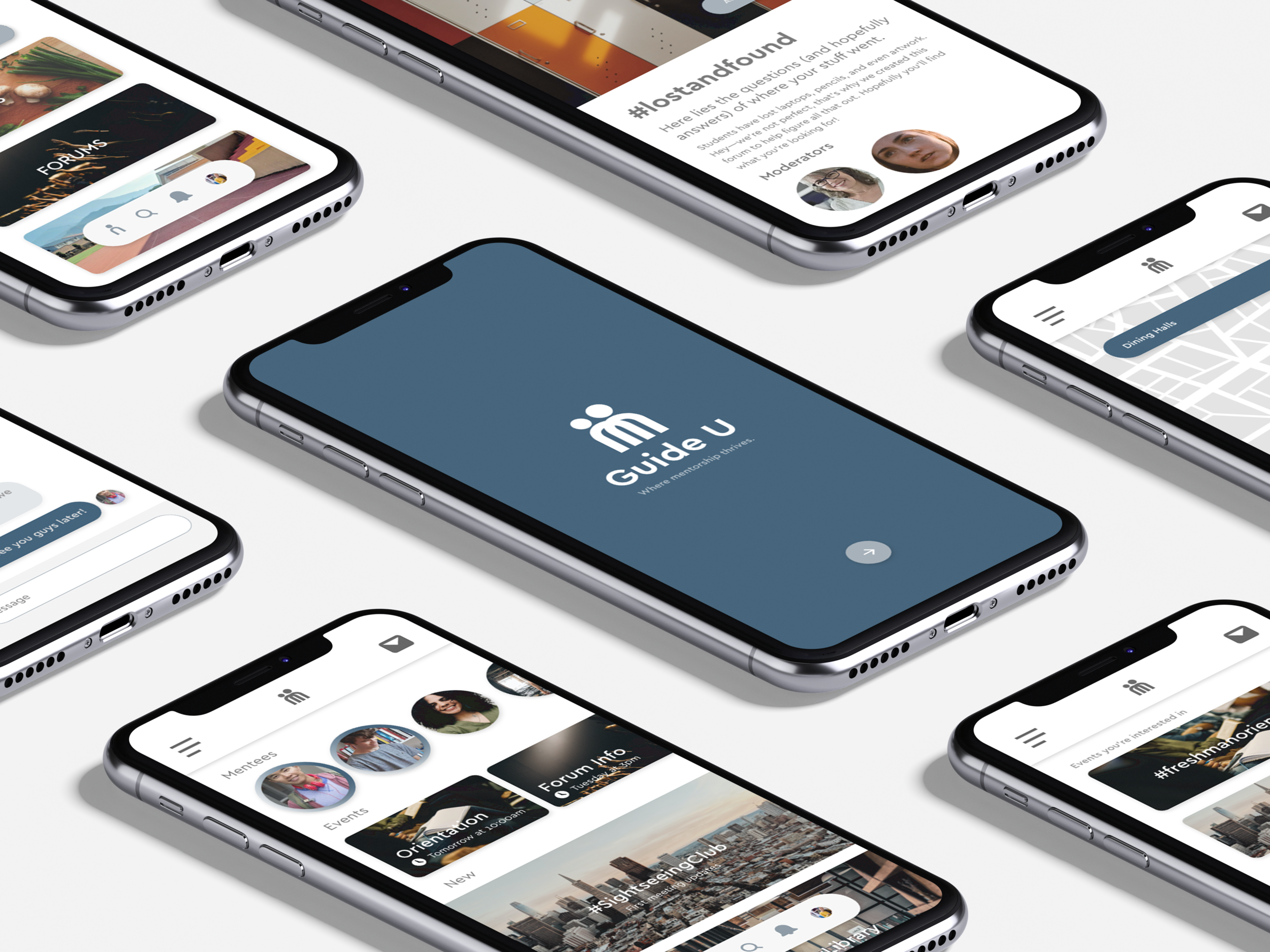
Guide-U
Helping new students navigate their new college environment through social networking between mentors and mentees.
Duration 1 week
Project Type Mobile App, IOS, Prototyping
Team Solo Project
Tools Illustrator, Photoshop, Indesign,
XD, Google Forms
Challenge Prompt Your school wants to strengthen the community by encouraging experienced students to connect with new students and help them adjust to campus life. Design an experience that allows mentors and mentees to discover each other. Consider the needs of both mentors and mentees, including how someone may become a mentor and how to connect mentors to mentees.
Initial Problem Discovery
What problem am I trying to solve?
Mentorship is not mandatory and finding it is unnecessary
Mentorship is provided but not a required aspect of my university's experience. Students deserve access to an efficient, organized, and fun university onboarding experience that is able to create a valuable experience for both mentors and mentees.
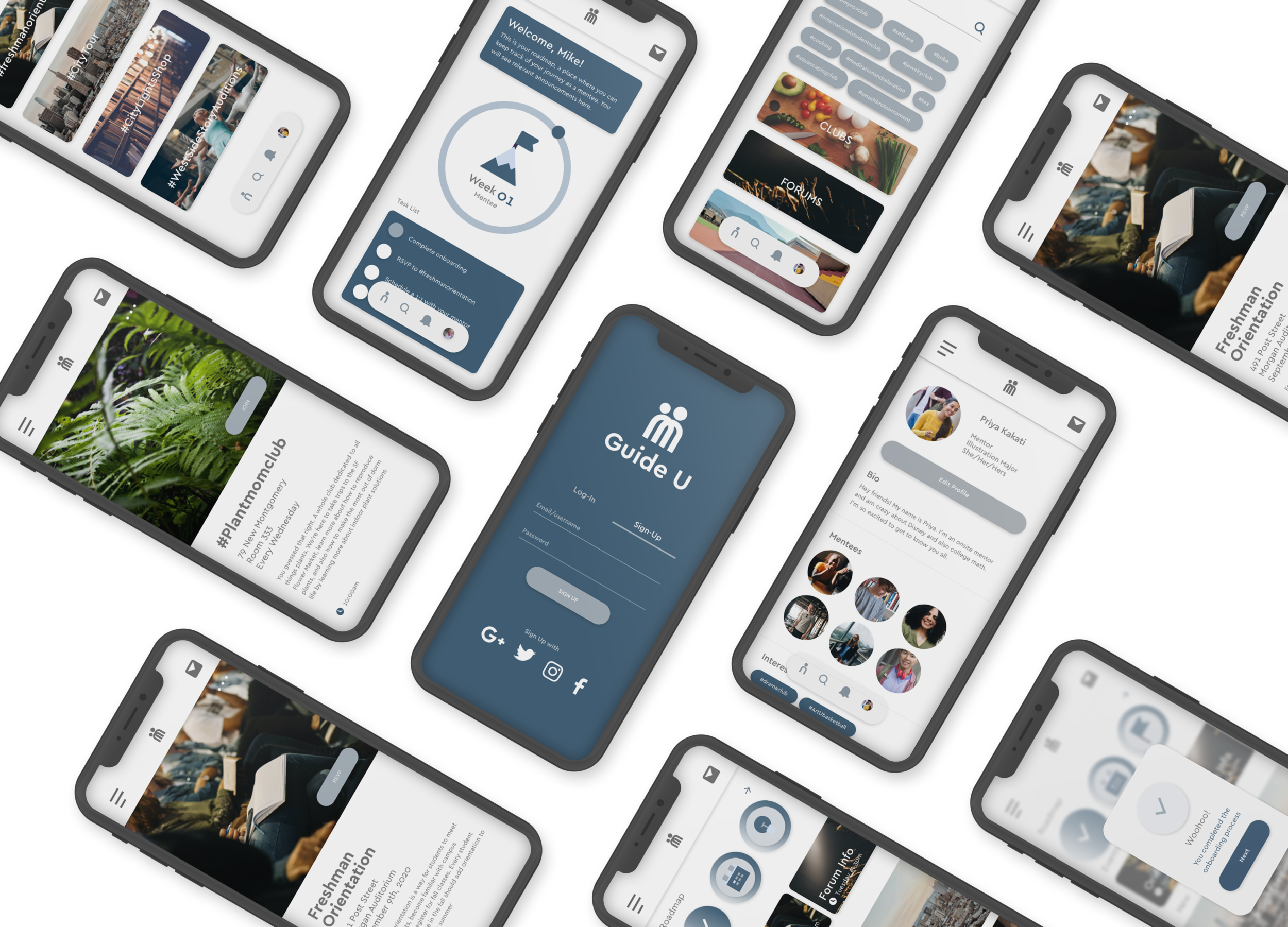
Problem Statement
How might I design an application that can motivate new students to be an active part of their university community, and inspire current students that want to become mentors?
Initial Research /Problem Validation
Why is this problem important?
75%
of executives say mentoring has been critical to their career development
—American Society for Training and Development
Mentoring is a system of semi-structured guidance whereby one person shares their knowledge, skills and experience to assist others to progress in their own lives and careers. Mentors need to be readily accessible and prepared to offer help as the need arises - within agreed bounds.
— Cambridge University
Initial Research/ Competitive Audit
What are other apps doing to solve this problem
Great focused use cases expressed in the app's site, however it is not accessible to students and does not work in a university setting
Application with clean and minimal design, however looks outdated and functions just as a second LinkedIn
A great mobile application driving the employment industry, but not necessarily with the most intuitive UI, recently expanding with "career advice" It doesn't cover a university students' needs for resources, etc.
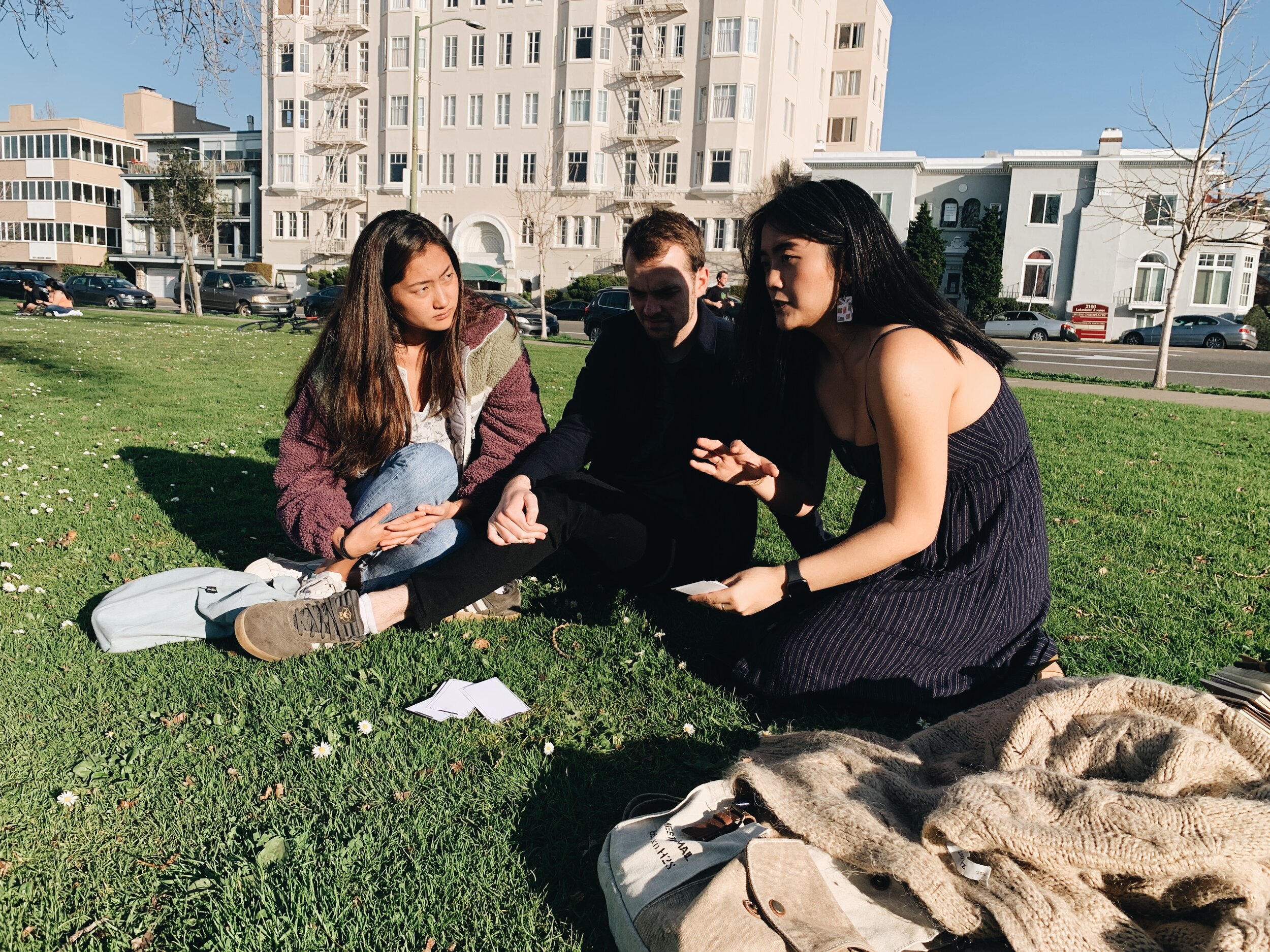
Whose problem am I solving?
Proactive University Students
Understanding Target Audience
Only 25% of college graduates reported having a mentor who encouraged them to achieve their goal
— 2018 Strada–Gallup Alumni Survey
19.9 million students were enrolled at U.S. colleges in fall 2019
— bestcolleges.com
95% of undergraduate students own a laptop or a smartphone and 30% own a laptop, a smartphone, and a tablet
— educausereview.edu
Why does this matter?
I can trust that the user base of college students are well-versed to UX patterns. In addition, I am able to understand the type of UX language to use.
Research & ExplanationWhat methods of UX research will I use to help drive clarity and focus to my solution, and why?
UX RESEARCH METHOD 01: SURVEYSI investigated what current universities want/think of mentorship.
My first method of conducting primary research was through creating a survey to find patterns of wants and needs of university students with regard to mentorship.
I collected 50 responses from students across 27 universities.
UX RESEARCH METHOD 02: USER INTERVIEWSThe goal of my interview process was to find out specific pain points and benefits each individual has had with their mentorship experience.
I decided to interview three people that I knew have been or are currently affiliated with a mentorship program. Through this, I can better understand how to create a narrative for this application's personas and user journeys.
Problems from Mentors
Hard to schedule the time needed to accommodate students in need of mentorship
There is no streamlined communication platform between mentors and mentees
There is no structured/organized way to help guide the meetings with mentees. In other words, there is too much freedom in what we can do and not enough guidance for mentors
It's hard to connect with individuals when they have absolutely nothing in common interests, majors, etc.
It's hard to find a balance between encouraging students and forcing them to participate
Problems from Mentees
The mentor groups sometimes are not a good fit, and there is no choice in being able to switch mentor groups
It was challenging to get set up with a mentor; the process took a long time
It was hard to stay motivated to stay in the mentorship group when other mentees were flaky
Individuals were interested in becoming mentors but found the application process too complicated
Initial Research /Problem ValidationUX RESEARCH METHOD 01: SURVEYSI visualized system boundaries in order to get a clear understanding of user types and information architecture.
With the aforementioned personas, I decided to flesh out the functionality and experiences I wanted the app to deliver for each user type.
Hypothesis Statement (So what)?
If I make an app that connects mentors and mentees based on their interests, explicitly outlines a user journey for a mentee, and mirrors UX patterns of social media apps, then students will become motivated to become engaged in a social network of students in their university.
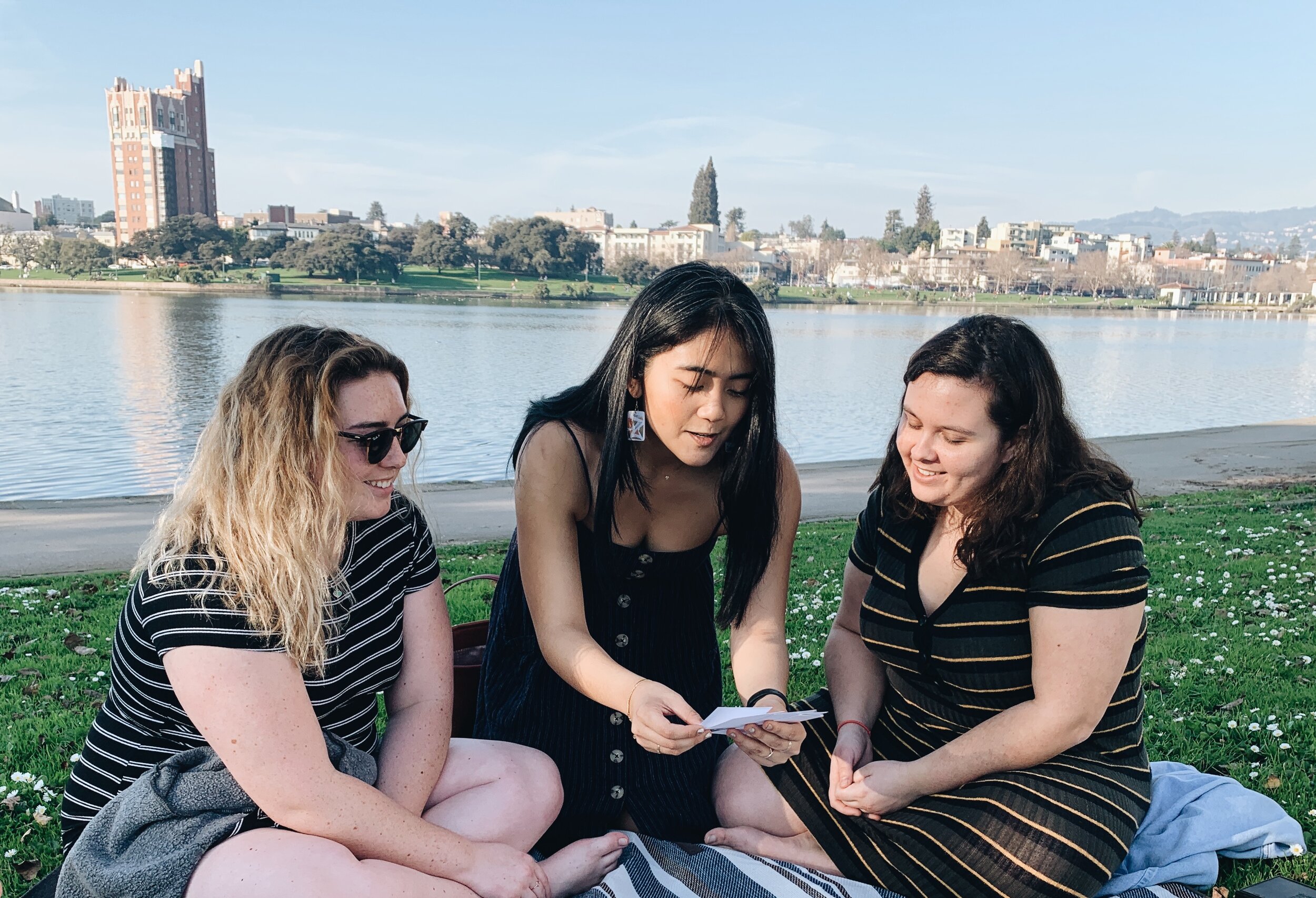
Problem/Opportunity Spaces
How am I going to address the problem spaces in my designs?
Problem space #1: Students do not feel that mentor-mentee matches aren’t always good matches
I want to create a solution that can help users connect with each other through an algorithm powered by #interests
Problem space #2: The UX of mentees and mentors is currently flawed in the lack of structure in current mentorship programs
By generating a guided roadmap that is aided by intuitive UI, I hope to create a more seamless and friction-free experience for both parties through a mobile app
Problem space #3: Mentors and mentees are discouraged and flake when they aren’t in a good group fit
Enabling social network connections in different app sections including clubs and other interest groups in addition to creating an easy re-placement process


















Research & Explanation
What methods of UX research will I use to help drive clarity and focus to my solution, and why? (Continued)
UX RESEARCH METHOD 04: PAPER PROTOTYPINGI found that the main issues were differentiating between the three user types, and not overwhelming the user with too much data.
Val & Theo, Paper prototype testing subjects
Cali and Sara, Paper prototype testing subjects
The Solution
Guide-U is a mobile mentorship application which facilitates the connection and interaction between student mentees and student mentors & enhances the mentorship experience between these users.
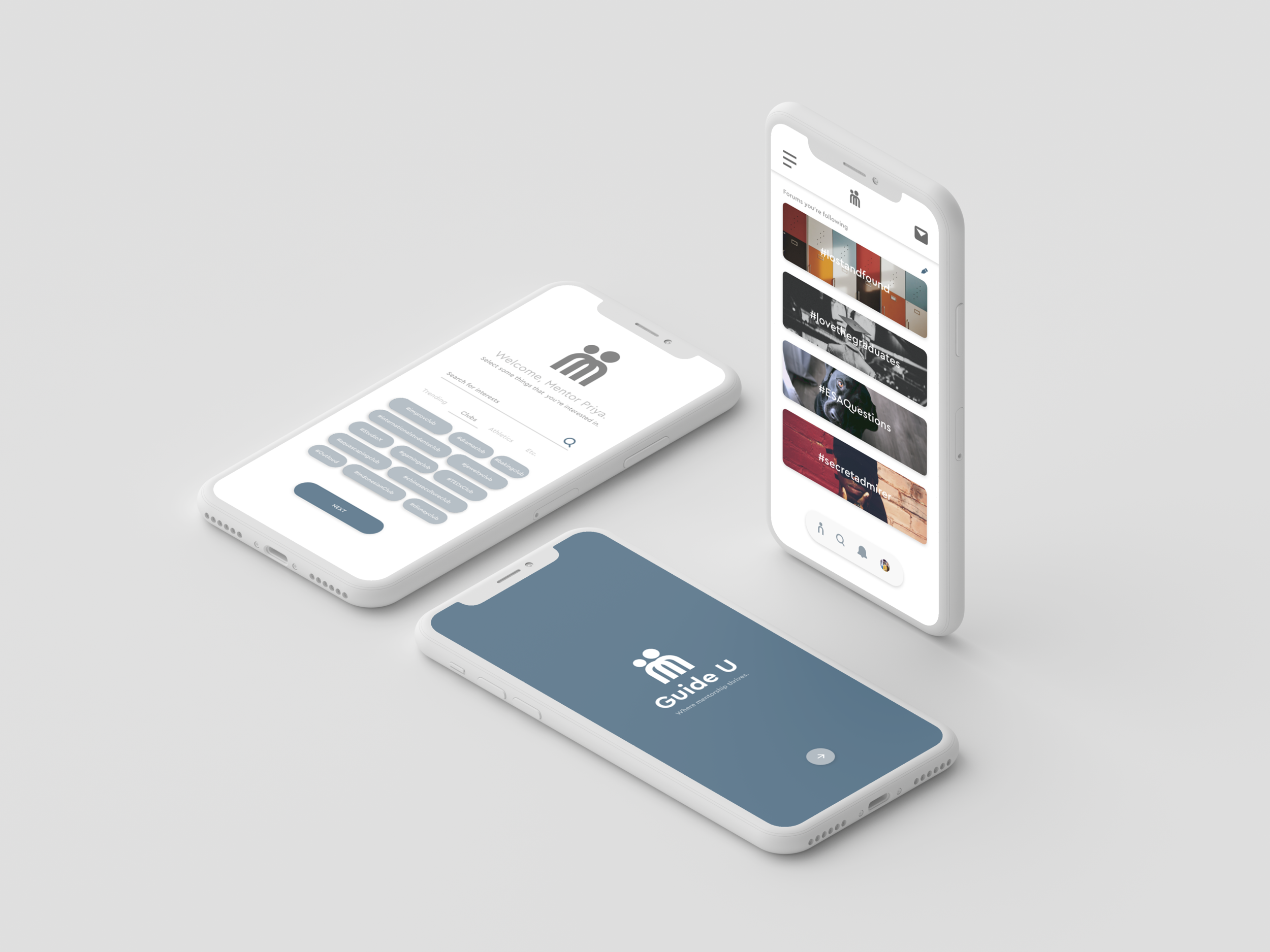
A thoughtful onboarding experience.
Mentorship programs should be accessible to all schools and institutions, which is why I created a universal application that could accommodate every school that chooses to download the app.
Using #interests to bring mentors and mentees together.
The biggest problem that individuals had with bad mentorship programs is the lack of connection between individuals. #Interests gathers relevant tags to bring people together in activities, events, and forums, as well as match them to the right mentorship groups
A place where everyone can reach each other, with just one click.
This application does not discriminate between Apple and Android devices when it comes to communication. Here, students can keep all school-related conversations in one place.
A guided mentorship program to help all students grow.
I created a "roadmap" program that helps motivate students to get tasks done through the application, as well as track their growth throughout the semester. With Roadmap, students can see their journeys from being a mentee to becoming a mentor.
Not every algorithm is perfect, which
is why students have a choice.
A frustration that I wanted to address is the question, "what if my mentorship group just doesn't work?" With this application, students are given the voice and the choice to request to change mentorship groups with just one tap.
Things that I learned
1 week deadlines call for sacrifices in my design process
Last semester, I was given the same task to create an application from scratch, but with 15 weeks instead of one. I encountered was that I was tempted to constantly expand the scope of the project. However, at a certain point I had to stop myself in order to make sure that I produce quality work in time.
Empathy helped me create intuitive decisions
With my experience of being a mentee in freshman year, and now being a mentor as a Senior Resident assistant, I personally went through the hardships of moving to a completely new country, let alone a new University.
Quality! Over! Quantity!
With meticulous design process discipline and passion for the design problem, rapid production is possible but should not be done at the cost of quality.
If I had additional time, I would…
Revise work with accessibility top of mind
This challenge was completed very early on in my UX Design understanding, and I didn’t understand how to check accessibility in terms of the UI. I would spend more time going through each design decision I made to ensure usability.
A/B Test Decisions
With those accessibility features in mind, I would take a second stab at a usability test with a digital prototype.
Create a user flow for an administrator
Due to the limited time of this project, I had to narrow my scope to create flows for mentors and mentees. However, as an educational app, it would be awesome to show what an administrator view would look like







